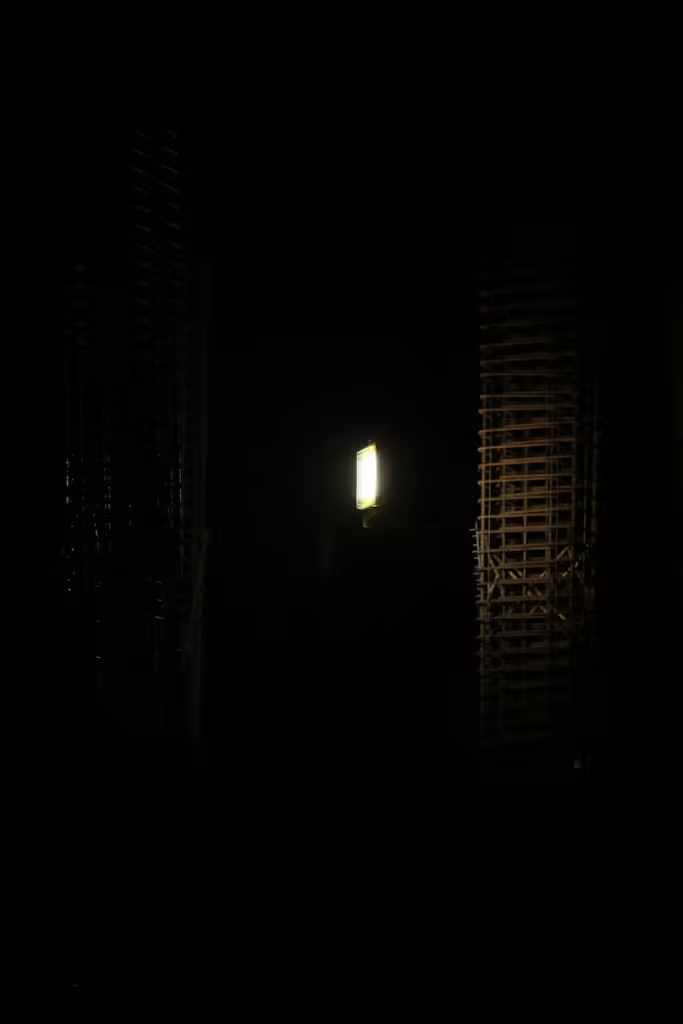Proper lighting on construction sites is more than a convenience—it’s a necessity. It plays a crucial role in ensuring workers’ safety, enhancing productivity, enabling efficient detection and avoidance of hazards, and preventing unauthorized access to the site. Adequate lighting allows construction teams to meet high standards in quality, even under challenging conditions, making it indispensable on any project.

Why Adequate Lighting Is Critical for Night Construction
Night construction often becomes necessary when projects are on tight deadlines or when daytime conditions, like high temperatures, make certain tasks (e.g., concreting) impractical. Proper lighting is essential for the following reasons:
- Worker Safety: Good lighting enhances workers’ ability to see clearly and avoid potential hazards, reducing accident risks.
- Emergency Situations: Construction sites lack permanent escape routes, so well-lit environments are vital for safe evacuation in emergencies.
- Movement of Materials and Equipment: Construction materials and portable equipment are continuously moved, creating a persistent injury risk. Proper lighting helps prevent accidents during these operations.
- Timely Completion of Work: Sufficient lighting enables work to continue effectively at night, which can be crucial for projects with tight deadlines.
- Safe Movement of Vehicles: Good lighting minimizes the risk of vehicular collisions and pedestrian falls, improving site safety.
Types and Applications of Site Lighting
Site lighting needs vary based on specific areas and tasks. Generally, construction sites use lighting in two primary categories:
- Internal Lighting: Used within the construction site to light up specific tasks or general areas for worker circulation.
- External Lighting: Applied to outdoor areas, such as storage zones, to ensure safety and visibility for workers navigating the site’s perimeter.
In most cases, the responsibility for ensuring sufficient lighting lies with the contractor, who must assess the site’s lighting needs based on these requirements.
Planning Construction Site Lighting
Thoughtful planning of site lighting saves time, increases productivity, and reduces the need for auxiliary lighting during tasks. Effective lighting planning includes:
- Site Layout: Planning begins with a scaled layout of the site, identifying key areas, equipment placement, and worker locations.
- Illumination Effects on Surroundings: Consideration of surrounding buildings, wildlife, and how lighting might affect neighboring areas.
- Power Supply and Relocation Needs: Planning for lighting to be repositioned as the construction site evolves over time.
- Measurement Standards: Assessing lighting levels by foot-candles or lux (lx) to ensure compliance with established standards.
Recommended Lighting Standards
The American Traffic Safety Services Association (ATSSA) provides minimum lighting standards for construction activities, measured in lux (lx) or foot-candles. Here are the recommended values for different site areas:
- External Circulation and Material Handling: 10 lux
- Internal Circulation: 5 lux
- Working Areas: 15 lux
- Concreting Activities: 50 lux
- Carpentry, Joinery, and Bricklaying: 100 lux
- Plastering, Painting, and Decorating: 200 lux
- Site Offices: 200 lux
- Drawing Boards: 300 lux
When planning lighting, adjustments for conditions like dirt buildup and lamp deterioration are essential. Twice the minimum recommended lighting can be applied to account for these factors.
Calculating and Arranging Lighting Requirements
To achieve adequate lighting, contractors often rely on calculations to determine the number of lamps needed. The utilization factor, typically around 0.23 for general lighting, is used to gauge light dispersal effectively. For tasks requiring concentrated light, a factor of 0.27 is applied.
Arrangements of lamps vary based on the lighting needs of different areas:
- High-Mounted Lamps: High-mounted lamps are ideal for illuminating larger areas and minimizing shadow interference.
- Fixed Lamps on Posts: Lamps fixed on posts at specific heights help maintain consistent lighting levels across smaller zones.
- Overhead Dispersive Lighting: Overhead lights suspended from a grid structure ensure even distribution of light over larger areas.
Types of Lighting Equipment and Arrangements
Construction sites use various lighting equipment to achieve optimal lighting for all areas, including routes, walkways, and general circulation paths. Common options include:
- Festoon Lighting and Bulkhead Lighting: Often used together, these types of lighting illuminate routes and general site circulation effectively on standard 230V or reduced 110V voltages.
- Handheld Lamps: For specific task areas, handheld lamps with trailing leads offer flexibility and are especially useful for concentrated lighting needs.
To avoid shadowing and maximize light coverage, site planners often mount lamps on strands or position them at strategic points, depending on the area and work requirements.
Conclusion
Effective lighting on construction sites is critical for worker safety, productivity, and project quality. Proper planning and equipment selection ensure that lighting needs are met for different areas and tasks, supporting safe, efficient, and high-quality construction work around the clock. Contractors must prioritize lighting to meet recommended standards, not only to protect their workforce but also to maintain productivity and quality on-site.
Adequate lighting transforms construction sites into safe, well-organized environments, enabling crews to perform their tasks efficiently and confidently, even under the cover of night.
